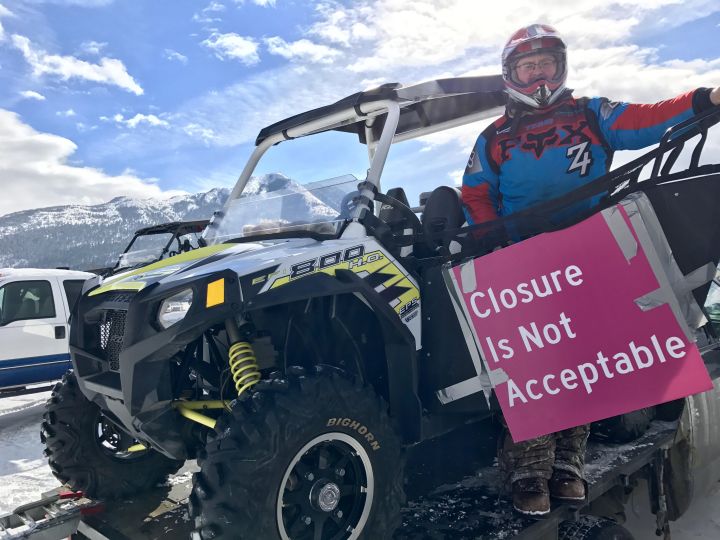New rules for two heavily used areas of Alberta’s southern foothills that include restricting off-highway vehicles to designated trails are getting high praise from ranchers, conservationists and even some OHV riders.

“The government is starting to listen,” said Gary Clark of the Quad Squad, a group of OHV riders in southern Alberta who advocate for trail access.
“I’m sure there’s little things wrong with it, but it’s absolutely wonderful to have this done,” said Ted Smith, a retired rancher and member of the Livingston Landowner’s Group.
On Thursday, the provincial government released plans for the Livingstone-Porcupine Hills area, a vast region of mountains, foothills, valleys, rivers and creeks covering 1,800 square kilometres in southwest Alberta. The area has been heavily used by ranchers, industry, off-road vehicle riders, campers and hikers.
It’s also home to endangered species such as grizzly bears and native cutthroat trout.
READ MORE: Alberta to expand Castle area parks, phase out off-highway vehicles
Over the decades concerns about the impact of those uses on the area began to arise. Thursday’s document, which follows years of planning and a public consultation, is an attempt to balance those uses.
Heavy controls will be placed on random camping.
About 70 per cent of the trails — all of which are informal, user-developed routes — will be closed. Off-highway riders will be restricted to designated and engineered loops designed for both fun and minimal impact.
Trail density will be kept between 0.4 kilometres per square kilometre and 0.6 kilometres per square kilometre. That’s within scientific guidelines for grizzly habitat and far lower than it is now.
While Clark acknowledges many riders won’t like losing the trails, he notes the government has stepped up in other ways.
The plan includes $5 million for trail improvement and infrastructure as well as money for education and better enforcement.
“Those are all positive steps,” Clark said.
He said some of those decommissioned trails could come back if they can be rebuilt to the new standard.
READ MORE: Barbed wire across Porcupine Hills trail has OHV users warning others
Joanna Skrajny of the Alberta Wilderness Association called the plans long overdue.
“It’s the right step toward reasonable management.”
She said she has some concerns about where some of the trails are located. As well, she noted some trails still cross streams, which would likely to damage trout habitat.
“The entire trail system ends up dumping sediment into the creeks.”
Skrajny said restored trails added to the system would still have to fit within the standard for density. She also called on the government to monitor the continued use and impact of the trail system.
Smith, who said the plan is almost unanimously backed by his group, said he’s been trying to get some form of controls since 1963.
He said the area is now likely to see use by a wider range of groups.
“It’ll make it so a lot more people will use it. A lot of people I know and people I meet, they’ve been extirpated by the noise and commotion out there.”
Environment Minister Shannon Phillips said the document was the result of two years of planning.
“A number of people use that area for all kinds of recreation and also to make a living. We had to balance a bunch of things and make some choices.”
READ MORE: Off-highway vehicle enthusiasts fight proposed ban in new Alberta parks
She makes no apologies for reducing OHV access.
“There are limits because there are ecological limits. There are also limits in terms of the patience of the neighbours.”








Comments